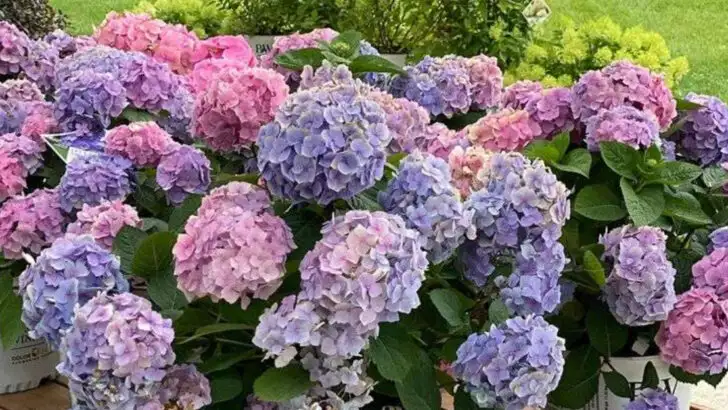Some plants are just built for summer. They thrive in the heat, bloom boldly, and—best of all—return year after year looking even better than before. If you’re tired of replanting every season, it might be time to fill your garden with reliable summer perennials that know how to show up.
These bloomers aren’t just tough—they’re also colorful, low-maintenance, and pollinator-friendly, making them perfect for both beginner gardeners and seasoned pros. Whether you’re working with garden beds, balcony containers, or just a sunny patch of soil, these plants will deliver lasting beauty without constant fuss.
From sun-loving classics to a few lesser-known favorites, here are 20 resilient summer flowers that return stronger every year—saving you time, money, and effort while keeping your space in full bloom.
Daylily
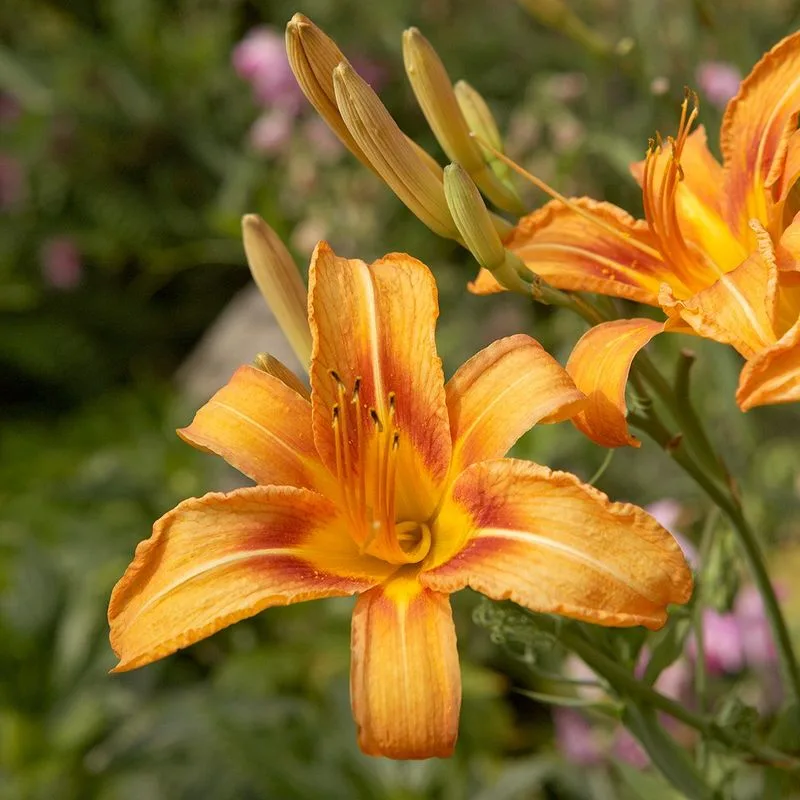
Imagine a garden where vibrant colors return with unwavering consistency. Daylilies offer such a spectacle, as they triumphantly emerge every summer. Known for their resilience, these flowers are a gardener’s delight, requiring minimal maintenance. Each bloom lasts only a day, yet their succession ensures a continuous display of beauty. With a wide array of colors, from sunny yellows to deep reds, they fit effortlessly into any garden design. As an added bonus, they’re deer-resistant, making them a practical choice for rural areas. Perfect for borders or mass plantings, daylilies have earned their place in perennial gardens.
Peony

Peonies are the epitome of elegance, enchanting gardens with their lush, fragrant blooms. These perennials are loved for their spectacular flowers, ranging from soft pastels to bold hues. Once established, peonies can bloom for decades, each year offering a more extravagant display. Their fragrance is unrivaled, adding a delightful scent to any garden. Often planted as focal points, they need patience to establish but reward with stunning floral displays. Peonies are not just flowers; they’re a testament to the beauty of patience and time. Their timeless appeal makes them a cherished addition to gardens worldwide.
Hydrangea
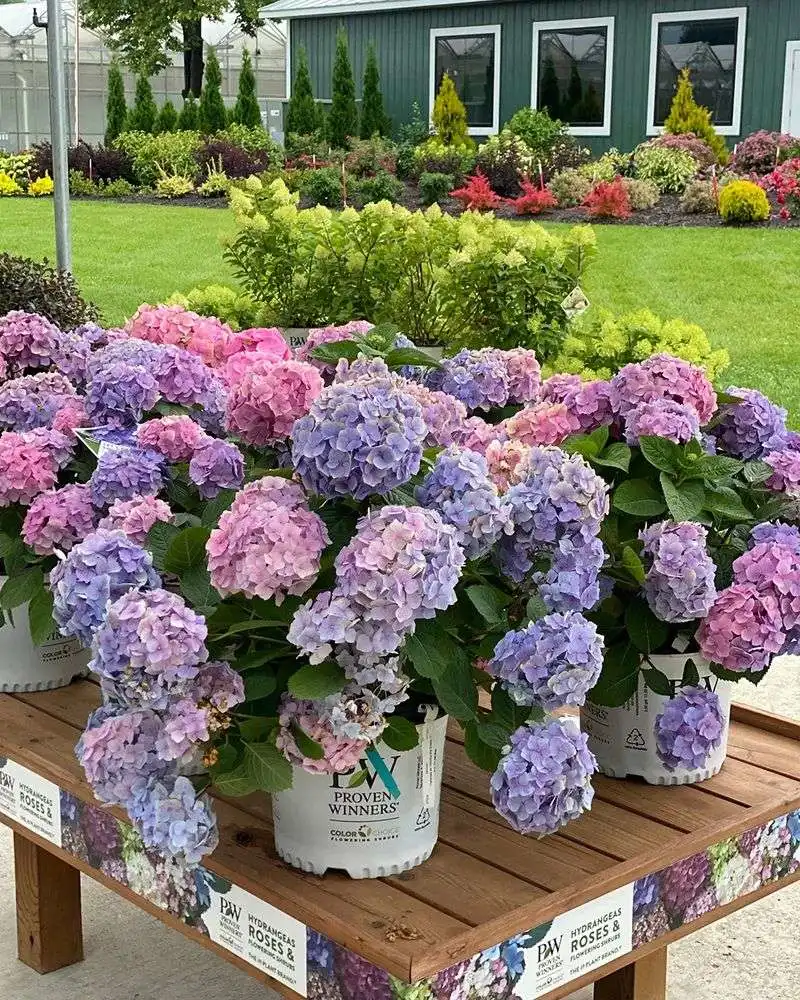
Gardeners adore hydrangeas for their impressive blooms and versatility. These shrubs boast large clusters of flowers, often changing color based on the soil pH. From vibrant blues to soft pinks, they offer a dynamic display throughout the summer months. Ideal for hedges or standalone features, hydrangeas adapt well to various garden styles. Their ability to thrive in both sun and shade makes them a versatile choice. With proper care, they return stronger each year, providing a breathtaking backdrop for any garden. Their ever-changing beauty is a constant source of fascination for plant enthusiasts.
Black-Eyed Susan
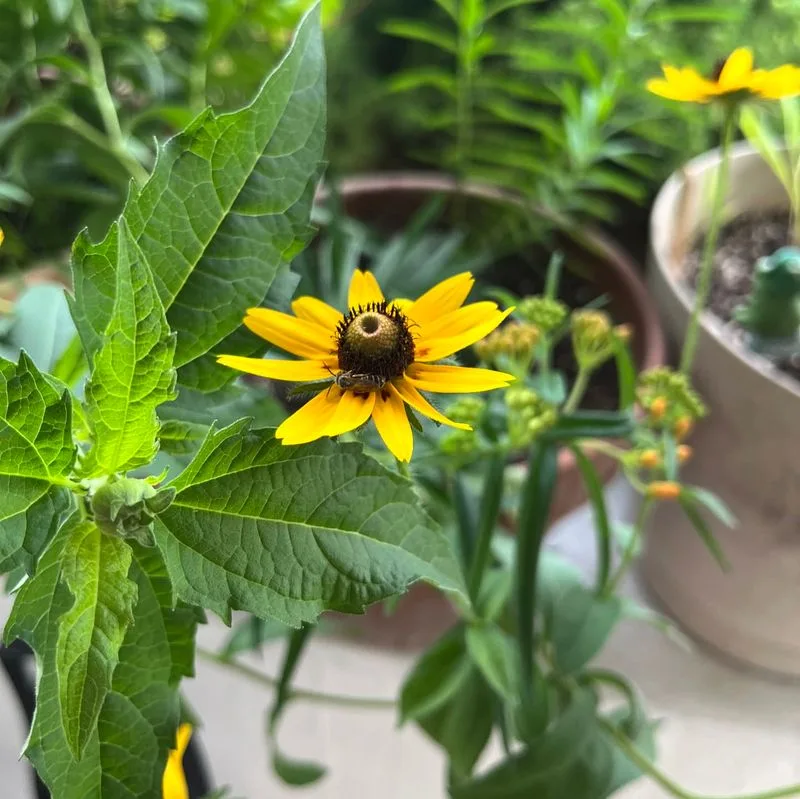
With their cheerful appearance, Black-Eyed Susans bring sunshine to any garden. These hardy perennials are known for their striking yellow petals and dark centers, resembling a daisy. Their robust nature makes them ideal for wildflower gardens and naturalized settings. Once established, they require little maintenance, thriving in various soil conditions. They’re also a magnet for pollinators, attracting bees and butterflies throughout the summer. Plant them en masse for a stunning visual impact or use them to complement other perennials. Black-Eyed Susans are a testament to nature’s resilience, returning year after year with vibrant energy.
Lavender
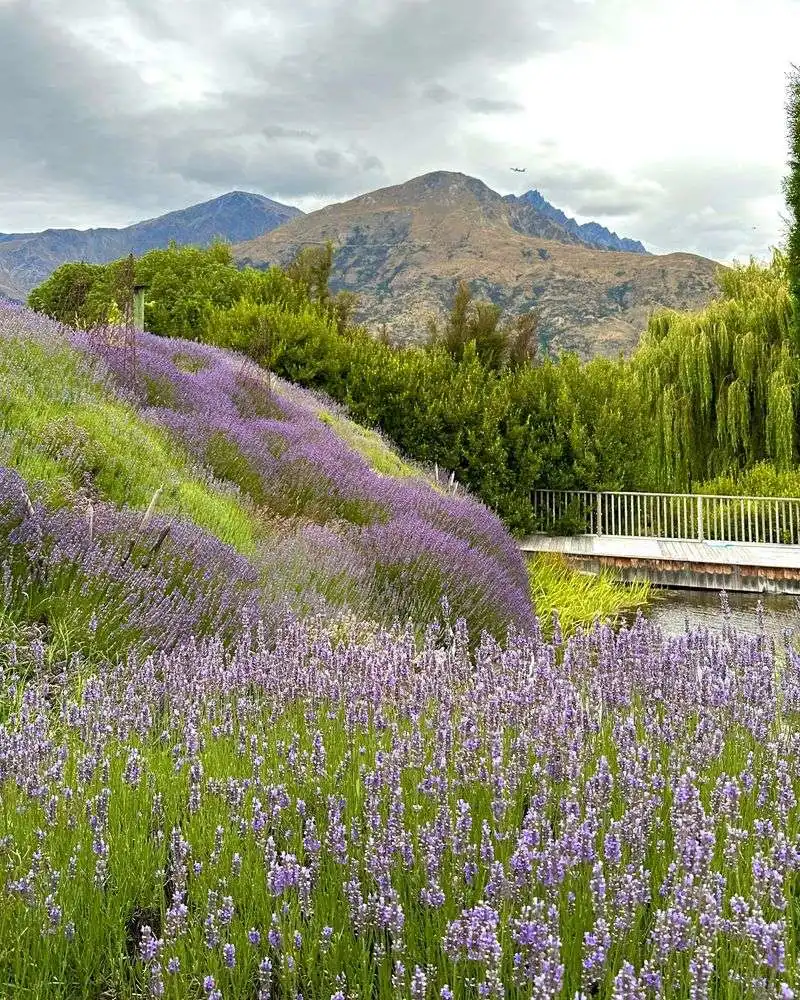
Lavender is cherished not only for its striking appearance but also for its soothing fragrance. These perennials thrive in sunny locations with well-drained soil, offering both visual and aromatic appeal. Their purple flowers create a stunning contrast against their silvery-green foliage. Used in culinary and medicinal applications, lavender’s versatility extends beyond the garden. They’re drought-tolerant and deer-resistant, making them a practical choice for sustainable gardens. Lavender attracts pollinators, enhancing biodiversity. A symbol of tranquility, these plants are perfect for borders, rock gardens, or as standalone features, promising a delightful garden experience.
Coneflower
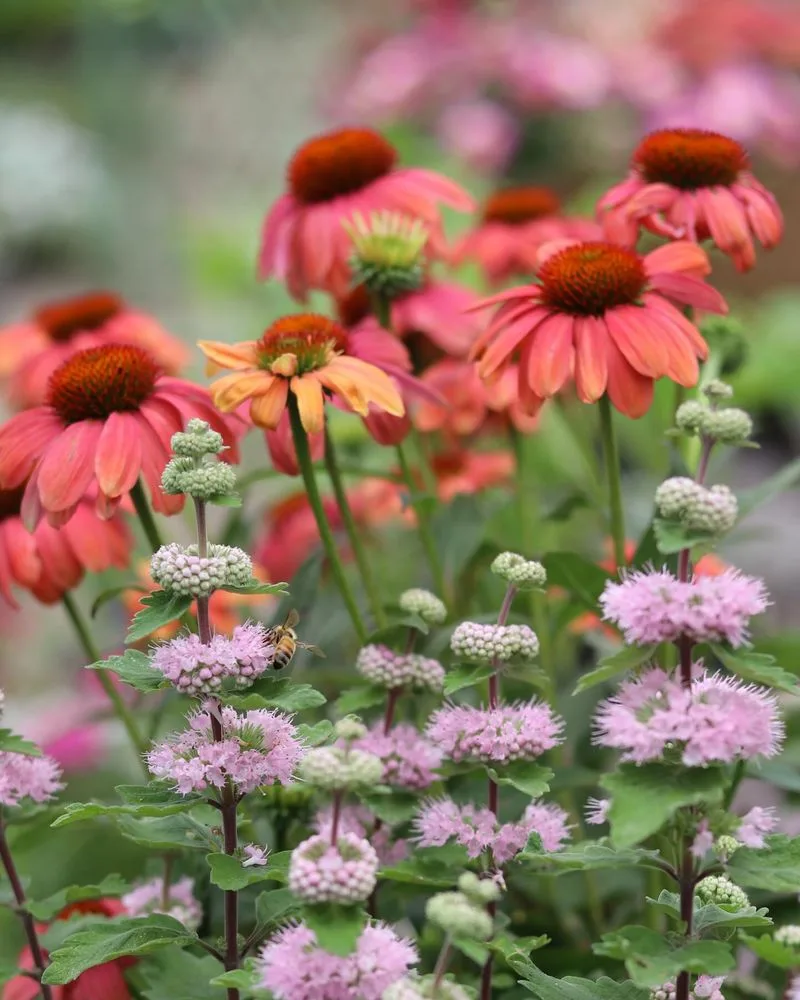
Coneflowers, or Echinacea, are beloved for their striking appearance and resilience. These hardy perennials feature daisy-like flowers with prominent, spiky centers, often in shades of pink and purple. Their drought tolerance and ability to thrive in poor soil conditions make them a favorite among gardeners. Coneflowers are not just visually appealing; they’re a haven for pollinators like bees and butterflies. Their long blooming season ensures continuous color throughout the summer. Often used in wildflower gardens or as part of mixed borders, coneflowers add a touch of wild charm to any garden setting.
Bee Balm

Bee Balm, with its vibrant hues, attracts both admiration and pollinators. Known for its aromatic leaves and unique flower shapes, it’s a favorite among gardeners seeking to enhance biodiversity. Available in shades of red, pink, and purple, Bee Balm thrives in sunny locations with moist soil. Its resistance to deer makes it an ideal choice for rural gardens. Beyond its beauty, Bee Balm has medicinal properties, traditionally used to treat colds and digestive issues. Plant it in clusters for a showy display, and enjoy the lively buzz of bees and butterflies it attracts each summer.
Hosta
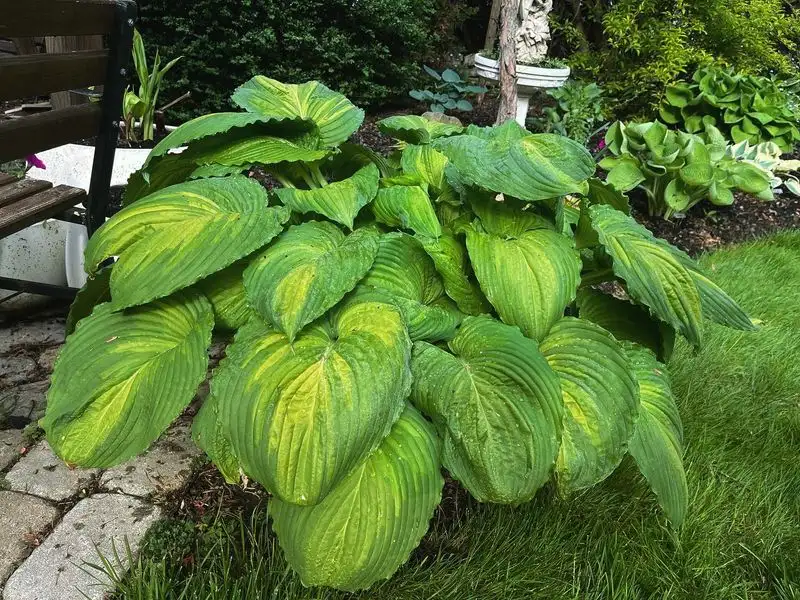
While hostas are primarily valued for their foliage, their delicate flowers are a charming bonus. These shade-loving perennials offer a lush, green presence in gardens, with some varieties featuring striking variegation. Their robust nature makes them a cornerstone in shaded garden beds. Hostas are low maintenance, requiring minimal care once established. They do well in containers, providing versatility in garden design. In summer, their tall flower spikes add vertical interest. Hostas are a testament to the beauty of foliage, offering texture and color in areas where other plants might struggle to thrive.
Salvia

Salvia, with its tall spires of vivid flowers, is a staple in summer gardens. These perennials are known for their long blooming period and ability to attract pollinators. Available in shades of purple, blue, and red, they add vertical interest to garden beds. Salvia thrives in sunny locations with well-drained soil, requiring minimal maintenance once established. Their aromatic foliage is deer-resistant, making them a practical choice for various garden settings. Whether used in borders, containers, or as cut flowers, salvia provides continuous color and fragrance throughout the warmer months.
Coreopsis
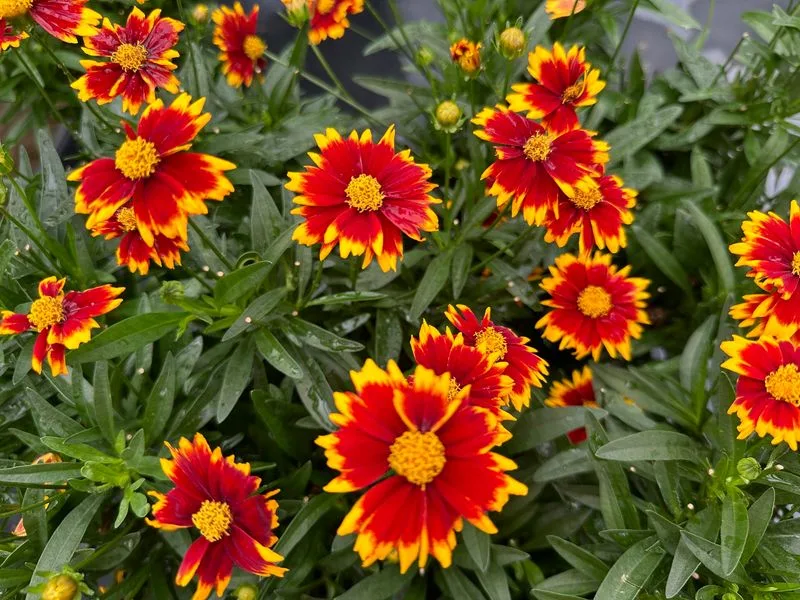
Coreopsis, often referred to as tickseed, brightens gardens with its sunny disposition. These perennials are easy to grow, thriving in poor soil conditions and requiring minimal care. Known for their vibrant yellow flowers, coreopsis offers a cheerful presence in borders and wildflower gardens. They have a long blooming season, ensuring continuous color in the landscape. Coreopsis is also a magnet for pollinators, supporting bees and butterflies. Their drought tolerance and ability to self-seed make them a sustainable choice for eco-friendly gardens. Plant them en masse for a brilliant burst of color that returns year after year.
Shasta Daisy

Shasta daisies evoke a sense of classic garden charm with their pristine white petals and sunny yellow centers. These perennials are beloved for their simplicity and elegance, making them a staple in traditional and cottage gardens. They thrive in sunny locations with well-drained soil, requiring minimal care once established. Shasta daisies are perfect for borders, containers, or as cut flowers, providing a cheerful presence throughout the summer. Their ability to attract pollinators enhances garden biodiversity. With a long blooming season and robust nature, Shasta daisies offer enduring beauty year after year.
Phlox
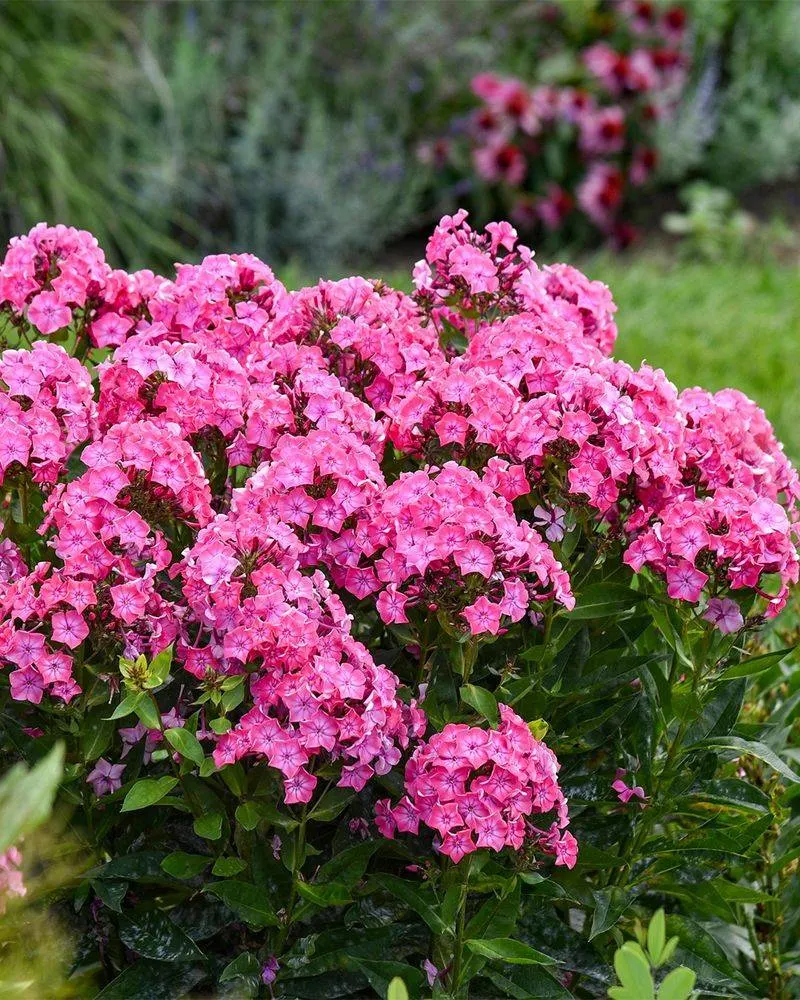
Phlox brings a burst of color to summer gardens with its dense clusters of flowers. These perennials are appreciated for their long blooming season and fragrant flowers, available in shades of pink, purple, and white. Phlox is versatile, thriving in both sun and partial shade, making it suitable for various garden settings. They’re perfect for borders, cottage gardens, or as ground cover. Their ability to attract pollinators like butterflies adds to their charm. Phlox embodies the essence of summer, providing continuous color and fragrance. Their carefree nature makes them a welcome addition to any garden.
Yarrow
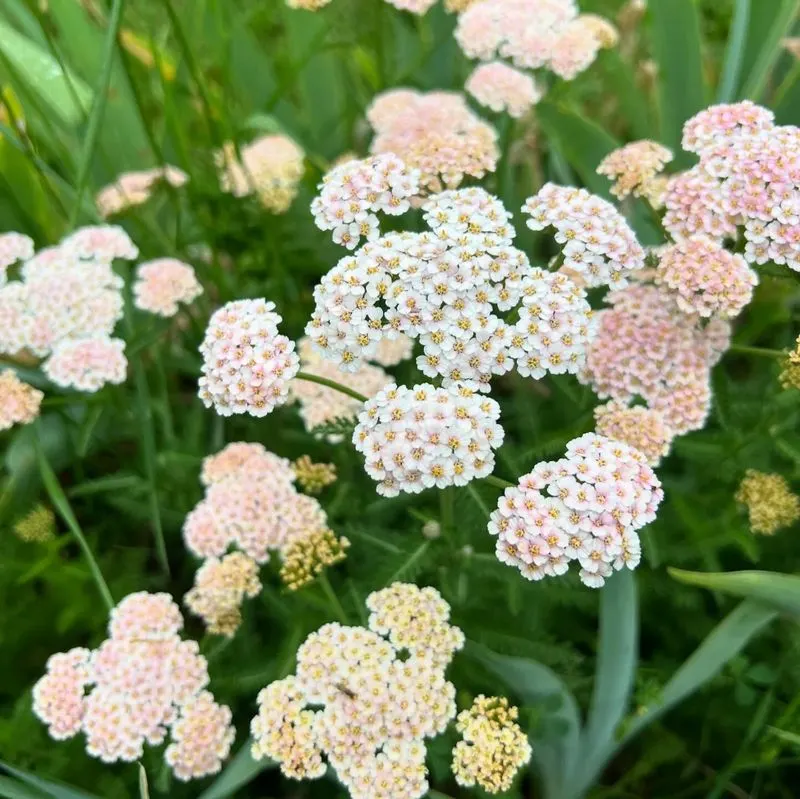
Yarrow is a resilient perennial known for its feathery foliage and clusters of tiny flowers. Available in a range of colors, from yellow to pink, yarrow adds texture and interest to garden beds. These hardy plants thrive in poor soil conditions and are drought-tolerant, making them ideal for sustainable gardens. Yarrow’s long blooming season and ability to attract pollinators enhance its appeal. Used in borders or as naturalized plantings, yarrow provides a touch of wild beauty. Its medicinal properties, traditionally used for healing wounds, add to its historical significance in gardens.
Astilbe
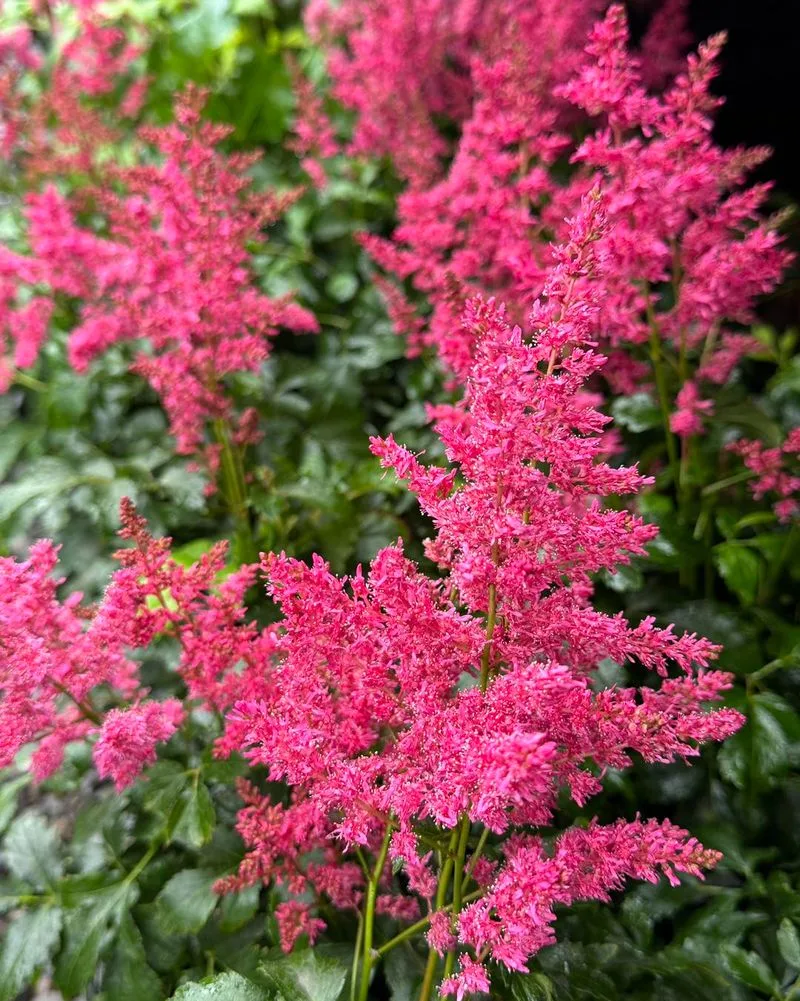
Astilbe is celebrated for its feathery plumes and fern-like foliage. These perennials thrive in shady areas, adding texture and color to gardens where other plants may struggle. Available in shades of pink, white, and red, astilbe offers a delicate beauty that contrasts with its robust nature. They’re perfect for borders, woodland gardens, or as part of a mixed perennial bed. Astilbe requires moist soil conditions, but once established, they return with vigor, year after year. Their ability to attract pollinators adds to their charm, making them a valuable addition to any garden setting.
Liatris
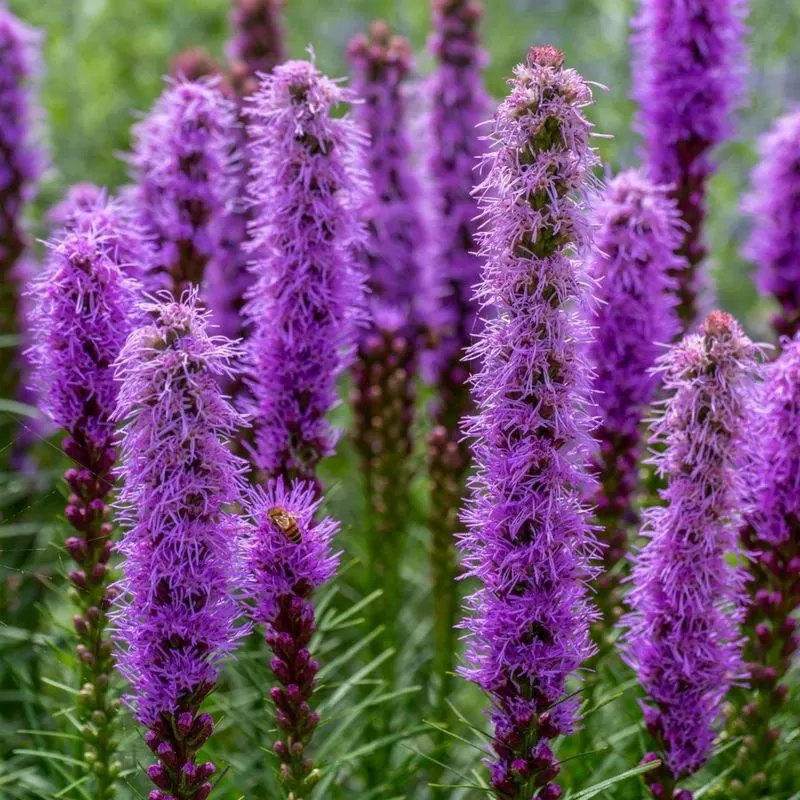
Liatris, also known as blazing star, is a striking perennial admired for its tall flower spikes. These plants thrive in sunny locations, offering vertical interest and a unique texture to garden beds. Liatris blooms from top to bottom, providing a dynamic display of color throughout the summer. Their ability to attract pollinators, especially butterflies, enhances garden biodiversity. They’re drought-tolerant and require minimal care, making them ideal for sustainable gardens. Whether planted in groups or as standalone features, liatris adds a touch of elegance and drama to any garden.
Russian Sage
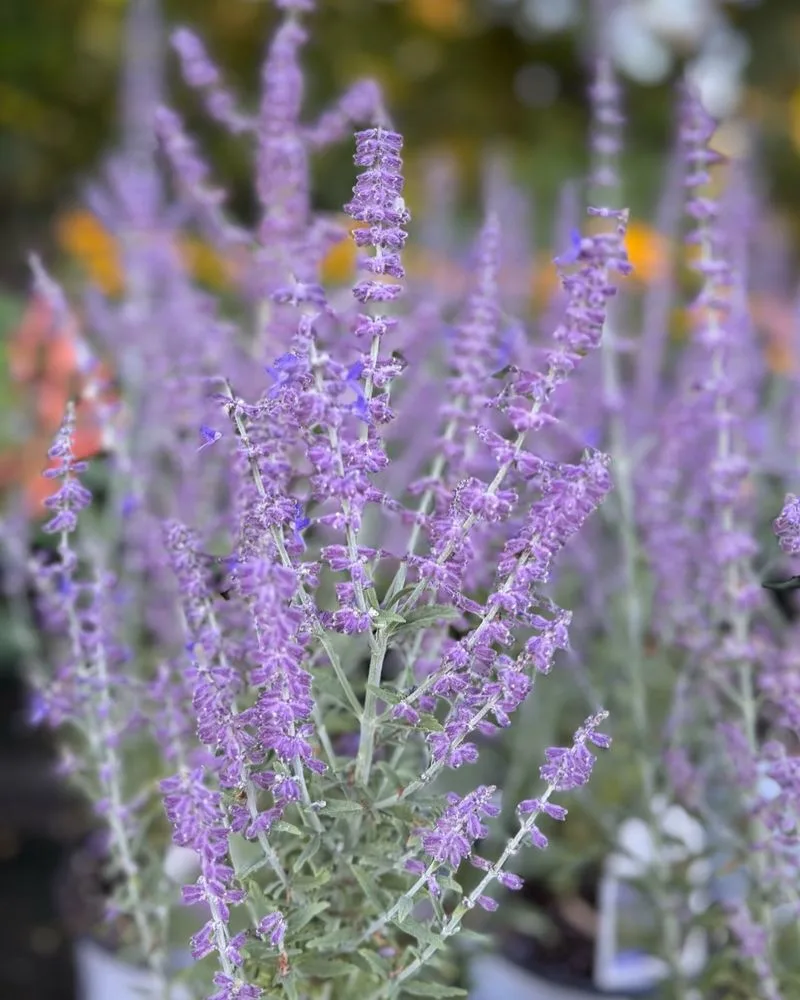
Russian sage is a standout perennial known for its airy, lavender-blue flowers and silvery foliage. These plants thrive in sunny locations with well-drained soil, providing a stunning display of color and texture throughout the summer. Russian sage is drought-tolerant and requires minimal maintenance, making it a practical choice for low-water gardens. Their aromatic foliage and ability to attract pollinators add to their appeal. Often used in borders or as part of xeriscape designs, Russian sage offers a sense of movement and grace, swaying gently in the breeze.
Butterfly Bush
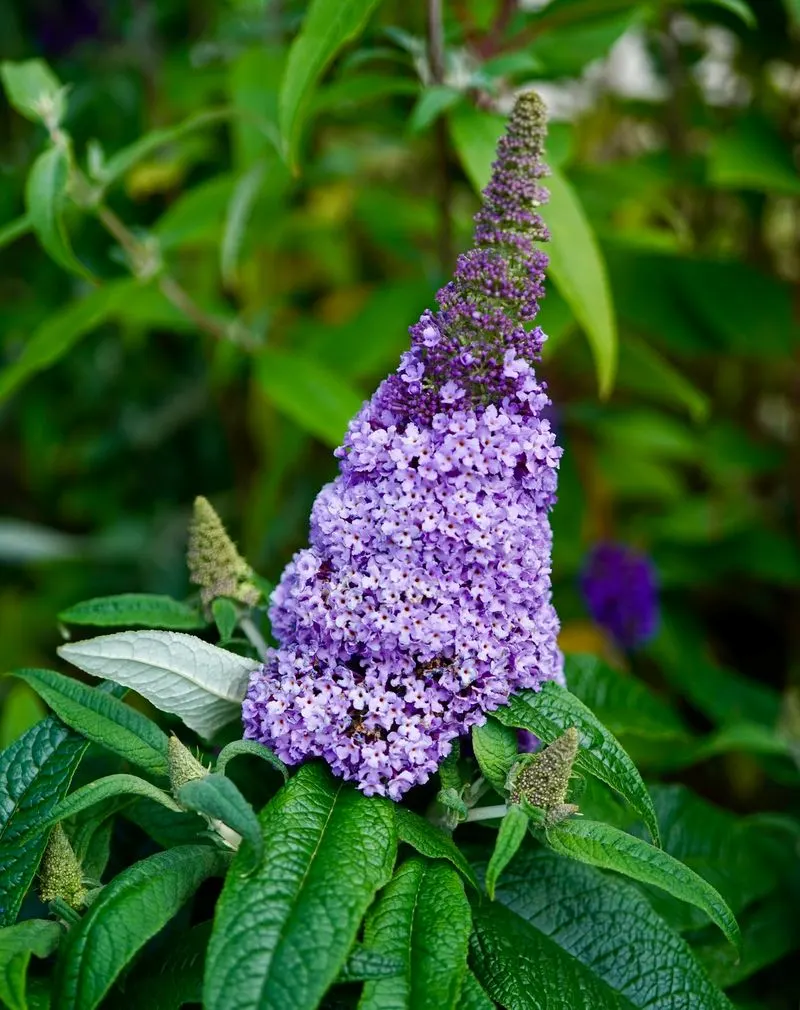
The butterfly bush is a magnet for pollinators, drawing butterflies with its fragrant, nectar-rich flowers. Known for its long, arching branches covered in clusters of blooms, this perennial adds a dynamic element to gardens. Available in shades of purple, pink, and white, butterfly bushes thrive in sunny locations with well-drained soil. Their robust nature and ability to bloom continuously throughout the summer make them a favorite among gardeners seeking low-maintenance beauty. Use them in borders, as standalone features, or to create privacy screens. Their captivating presence and wildlife appeal make them an invaluable garden addition.
Gaillardia
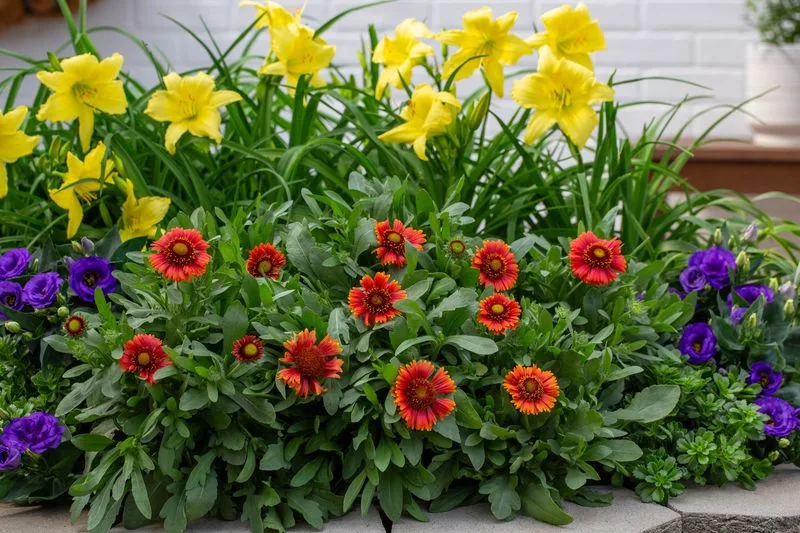
Gaillardia, or blanket flower, is a vibrant perennial that brings warmth to any garden. Known for their fiery red and orange blooms, they offer a striking contrast against green foliage. These flowers are drought-tolerant and thrive in sunny locations, requiring minimal care once established. Gaillardia’s long blooming season ensures continuous color throughout the summer months. They’re perfect for borders, rock gardens, or as part of a wildflower meadow. Their ability to attract pollinators, including bees and butterflies, adds to their appeal. Gaillardia embodies the spirited essence of summer, offering enduring beauty year after year.
Anemone
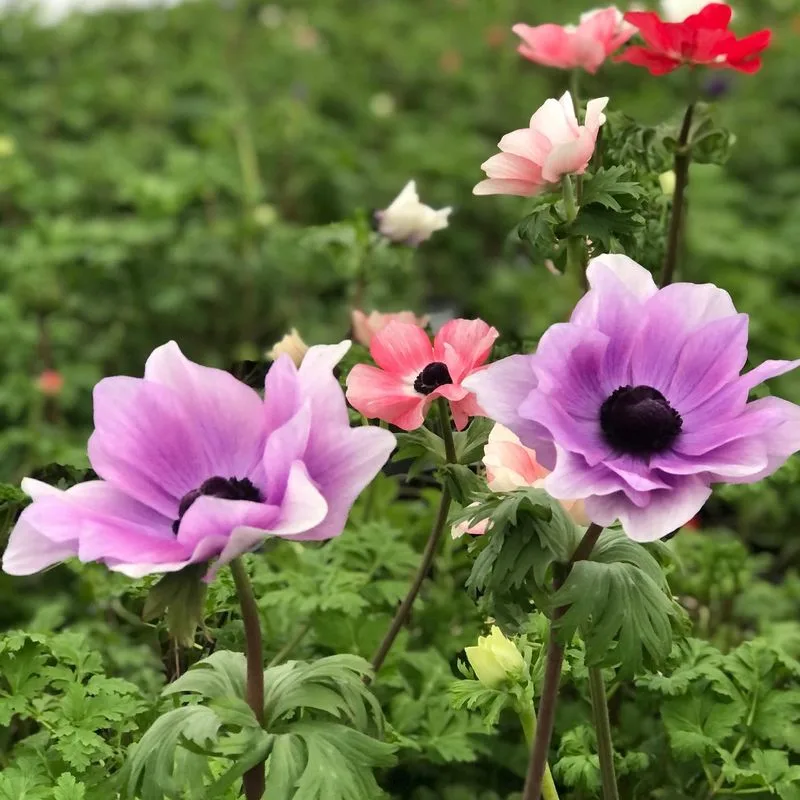
Anemones bring a touch of elegance to gardens with their delicate, poppy-like flowers. These perennials thrive in partial shade, offering a burst of color in late summer. Available in shades of pink, white, and purple, anemones add a soft, romantic feel to garden beds. They’re perfect for borders, woodland gardens, or as part of a mixed perennial display. Anemones are low-maintenance, returning stronger each year with minimal effort. Their ability to attract pollinators adds to their charm, making them a favorite among garden enthusiasts. These flowers are a testament to nature’s subtle beauty, enriching gardens.
Sedum
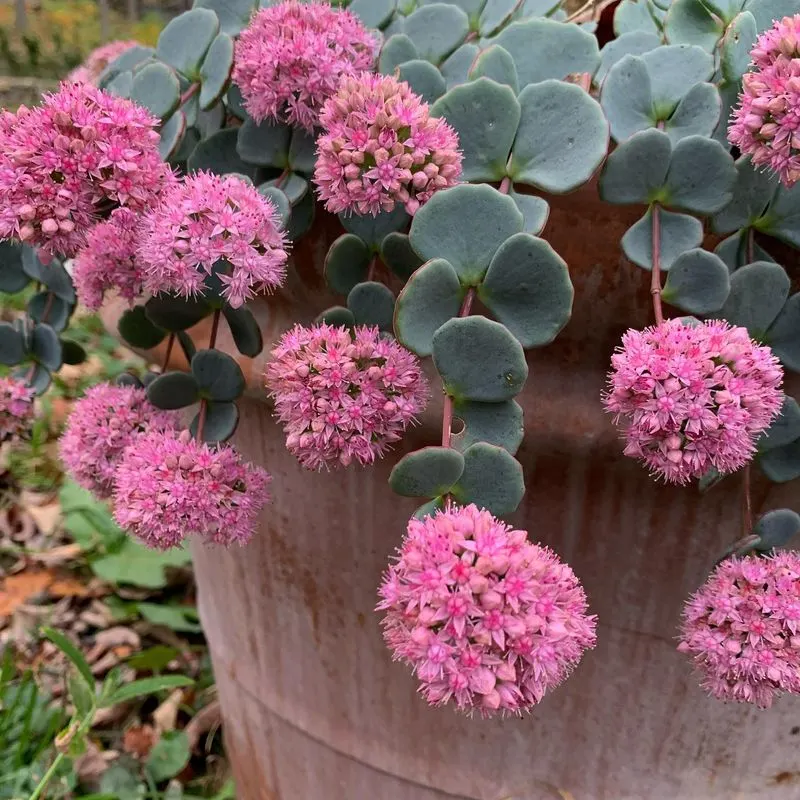
Sedum, or stonecrop, is a resilient perennial known for its fleshy leaves and clusters of star-shaped flowers. These plants thrive in sunny, well-drained locations, making them ideal for rock gardens or containers. Sedum’s drought tolerance and low maintenance requirements make them a favorite among gardeners seeking sustainable options. Available in various colors, including pink, red, and yellow, they offer continuous interest throughout the summer. Sedum attracts pollinators, supporting garden biodiversity. Their unique texture and ability to thrive in challenging conditions make them a valuable addition to any landscape, providing beauty and resilience.

